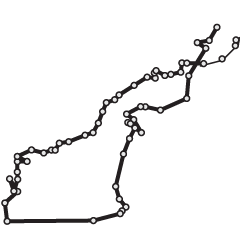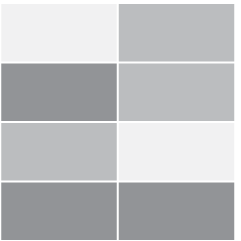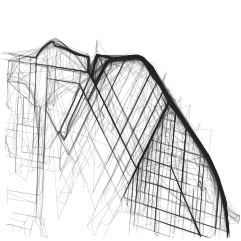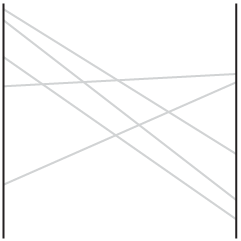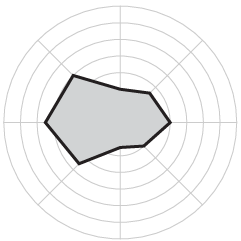-
Members Only
-
In an effort to measure and highlight risks globally, the German Federal Foreign Office released the Climate-Conflict-Vulnerability Index. It shows the risks of climate change, such as drought, floods, and wildfire. It shows conflict, such as armed violence and societal tensions. It shows vulnerability, such as gender inequality, food insecurity, and soil degradation.
An interactive map lets you see all the parts together or separately. It’s a lot of variables to take in at once, but the tool helps you sift to get a feel for risks everywhere. You can also download data quarterly or the full historical time series to analyze and visualize yourself.
-
About 4% of registered light-duty vehicles in the United States are either electric, hybrid electric, or plug-in hybrid, as of 2023. That’s more than double than in 2016. However, electric adoption isn’t consistent across the country.
-
Make the Chart: Grid Map with Stacked Areas
Breaking it down to the small steps and choices with data, code, and editing that lead to a finished chart.
-
For NYT’s the Upshot, Ronda Kaysen and Alicia Parlapiano highlight analysis by Patrick Sharkey, which shows time spent at home relative to 2003. Based on data from the American Time Use Survey, the trend was increasing, but the pandemic helped push things along.
See also the change by activity group that I looked at a while back.
-
We mostly hear about a handful of swing states these days, as presidential campaigns focused more on optimizing resources. Research by Shaw et al. identifies the shifts and the state-by-state results. For the Washington Post, Hannah Dormido and Adrián Blanco show the changes as a set of maps over time.
In the 1950s, you see wide coverage between the Democratic and Republican parties. In the 2000s, the strategies grow more sparse. I suspect the internet and an increasing volume of data had something to do with that.
-
You’re probably going to see election forecasts more this month, and one candidate will have a higher chance of winning than the other. Even so, it won’t mean much, because the forecast is basically a coin flip. Nate Silver explains the chances in the context of gambling:
Gamblers understand this, perhaps like nobody else. Yes, if you think Harris is really a 55/45 favorite and prediction markets have it the other way, you have a profitable wager — but you’re still going to lose the bet almost half the time. (There have been much bigger discrepancies between models and prediction markets in the past.) In sports betting, the breakeven point on a point spread bet is generally 52.5 percent — that’s just enough to cover the vig — but most experienced bettors would avoid the 53/47 games1 to reduce variance and because there’s ultimately no way to know that your model is right. In poker, you can’t avoid making tough decisions — you always have to fold, raise/bet, or check/call — but many decisions in the game are so close that you’re literally supposed to randomize your play, employing a mixed strategy because being unpredictable outweighs any slight edge from one line being superior to another.
-
For The New Yorker, Jay Caspian Kang relates the election’s unwavering randomness to choices while gambling that probably don’t matter:
Forgive the jargon, but if you’re dealt an ace and a queen—a strong starting hand—in the big blind, and face a mid-position open, the best strategy, according to G.T.O. poker, is to three-bet x percentage of the time and just call the other times. What this means is that you can call or raise and both options are correct, as long as, over time, they’re in line with a rolling calculation of percentages. As a result, there’s a Zen to the modern poker strategy, which may be why I often watch these videos late at night when I can’t sleep. I especially appreciate the commentary of Phil Galfond, a personable former professional poker player, who now makes videos in which he says things like “In this spot, you can fold sometimes, call sometimes, and raise sometimes, and it’s probably fine.”
This is probably not the last gambling metaphor you’ll read this month.
-
The Pudding examines who gets shipped, which means a pairing of characters in a relationship. Relationship types, demographics, and fandoms. Completely uninitiated to the world of fan fiction, I did not know many words going into this, but now I do.
-
For WP’s Department of Data, Kati Perry and Adrián Blanco examine campaign spending through the lens of restaurant and cuisine preferences between political parties:
[W]e wanted to wrap our arms around a bigger question: where the campaigns spend the most money. We limited our analysis to places that racked up at least $5,000 in campaign spending, coming up with a list of roughly 500 popular restaurants and food purveyors, involving more than 21,000 receipts worth a collective $13 million.
See also the Department of Data’s previous party split analysis on names. They should do the thing where with each analysis, they go more and more ridiculous so that by election day they’re counting letter usage in rally speeches.
-
Based on rideshare data collected by Bloomberg, it appears that Uber and Lyft are using a loophole to avoid paying drivers a minimum wage in New York. They lock out drivers throughout the day to reduce paying out of pocket. The rideshare companies said they only do this during busy times, but the Bloomberg analysis shows that lockouts happen almost every hour:
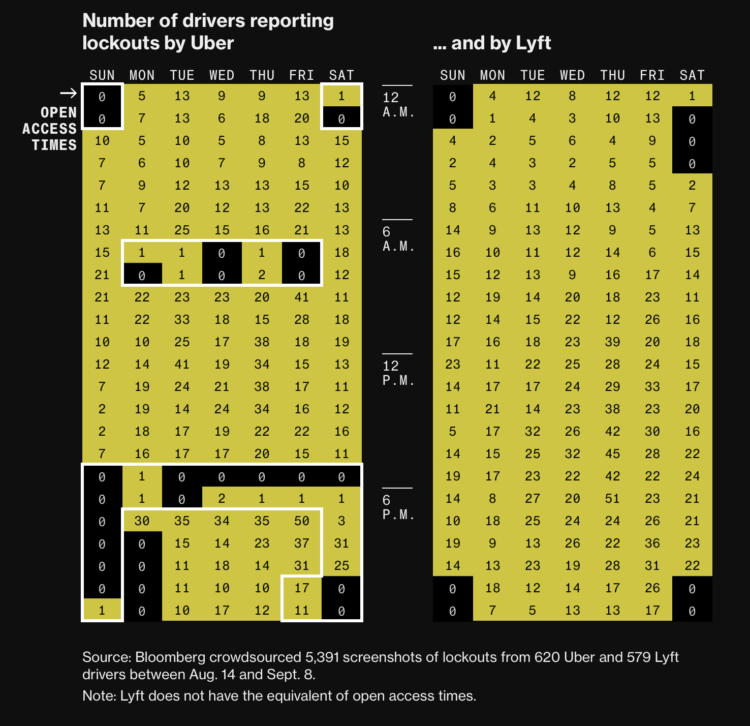
-
For The Guardian, statistician David Spiegelhalter describes three kinds of luck:
- Circumstantial luck — Right place, right time or wrong place, wrong time
- Outcome luck — Randomness outside your control
- Constitutive luck — A series of events leading up to the present
He emphasizes the third with a story about his existence that starts with his grandfather surviving the war and then his parents in a cold winter:
Of course, if one of those shells had fallen a bit closer, or if my grandfather had had to lead his men into attack, I would not be here to tell the story. And this is only one of the long chain of fortuitous events that led to my existence: my mother being captured by pirates in China and later escaping Shanghai in 1937 under shellfire; my parents meeting during the war; my father closely avoiding plane crashes in the RAF and then nearly dying of tuberculosis. Then, when a cold snap hit the UK in November 1952, they were living in a barely heated stone cottage, with no television and nothing to do but go to bed early to keep warm … and here I am.
Spiegelhalter is very good at communicating statistics to the public. He has a new book on uncertainty already out in the United Kingdom and available for pre-order in the United States.
-
Hey, it’s Nathan Yau. This is The Process, the weekly newsletter for FlowingData members. We look at the many ways to visualize data and how design choices can change a message and interpretation. I’m a little early this week. Given the topic and situation in Florida, I’m making this issue public.
-
NOAA has a viewer for their GOES (Geostationary Operational Environmental Satellite) system, which provides current imagery from space. The images update every five minutes, and you can see different bands at different times for different locations.
This is the current view for the Gulf of Mexico where you can see Hurricane Milton approaching Florida:

-
Hurricane Milton continues towards Florida, estimated to make landfall on October 9, 2024 in the evening. This means potential for storm surges, high winds, flooding, and tornadoes. Instead of trying to put this all on one map, Bloomberg put together a collection of maps to track Milton.

Each map shows potential for a threat, and as you pan one map, the rest go with it.
-
Short version: Members make FlowingData possible, and it’s a lot easier to support through membership now. There are two new plans: Deviation and the upgraded Outlier. The Outlier plan is for those who want to support the site more, and as a bonus, you get a signed copy of Visualize This (2nd ed.).
Help me keep this site running forever, and get access to courses, tutorials, and the members-only newsletter. Fun data things are in the queue.
Longer version: FlowingData is 17 years old and has been almost entirely supported by paid memberships for the past 12. An eternity in internet years. Thanks to you all.
Read More -
For The Washington Post, N. Kirkpatrick, Aaron Steckelberg, and Leslie Shapiro provide a visual guide for what to do before, during, and after a hurricane. The guide was originally published in 2023, but Hurricane Milton is headed towards Florida, expected to make landfall on Wednesday or Thursday. It just reached category 5 strength. Stay safe, Floridians.
-
Deaths by drug overdose in the United States increased sharply over the past decade, but a small shift downwards appeared over the past couple years. Just not equally everywhere. For NYT Opinion, Maia Szalavitz with graphics by Sara Chodosh and Aileen Clarke, show the changes between 2000 and 2023 and how it has varied by region.
A set of alluvial diagrams show the change in deaths per 100,000 people in the Northeast, Midwest, South, and West of the United States. The West appears to be experiencing the tail end of the rise in fentanyl.
-
In a follow-up to the 2020 project, Moritz Stefaner and Google Trends show geographic and temporal search patterns for this election year in Waves of Interest.
This site presents Google Trends data on a curated set of political topics, comprising the currently most searched political concepts in the United States, topics from Pew Research Center’s election surveys, as well as a few manual additions to account for emerging issues.
Election-related graphics tend to make me feel a bit anxious, but the smooth transitions in time and space in this set of graphics is actually kind of soothing.
-
In their ongoing series on fentanyl in the United States, Reuters illustrates the journey of fentanyl precursors hidden among billions of everyday shipments. The volume of boxes, despite various layers of security, makes it impossible to intercept all illicit materials.
There are charts blended with the illustrations that you might miss if you’re just casually browsing, such as the treemap made of boxes shown above. The style reminds me of the hidden-object illustrations in kid magazines.



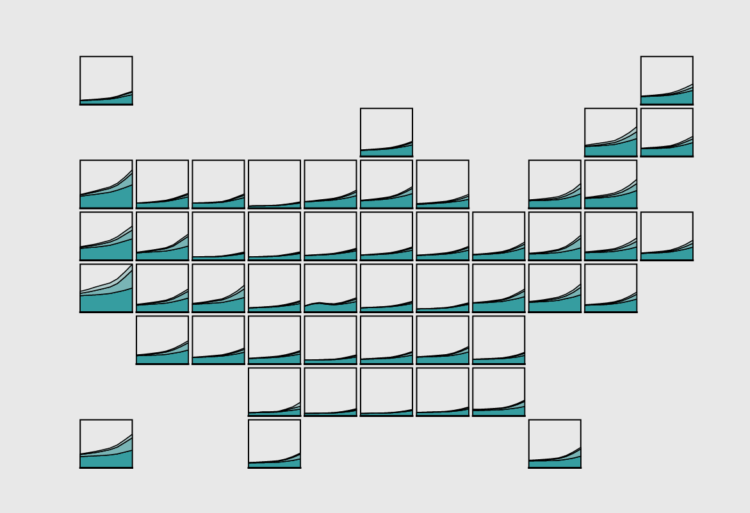



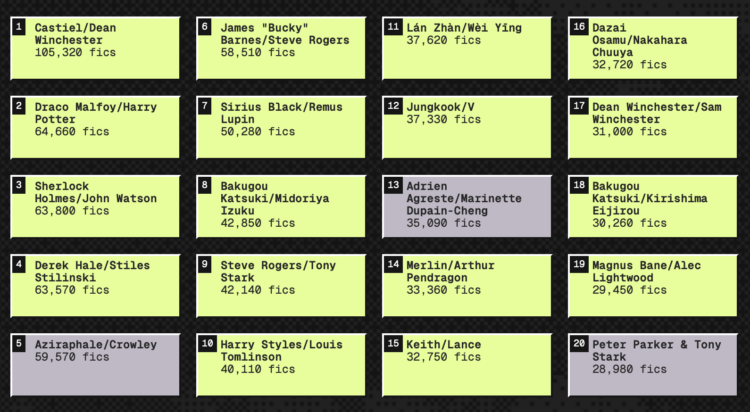
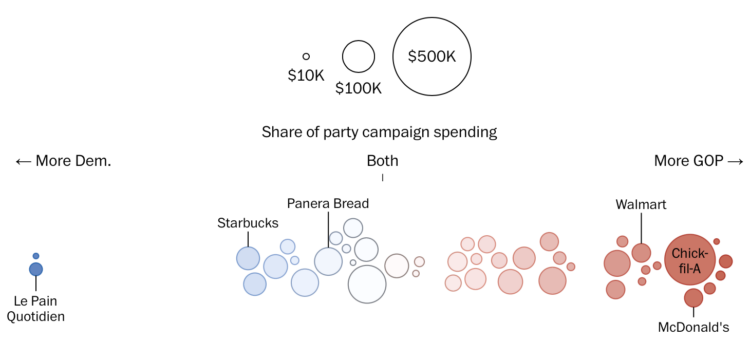
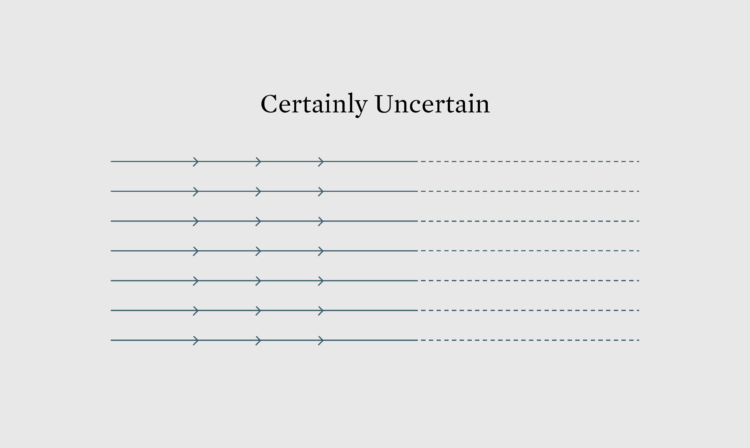



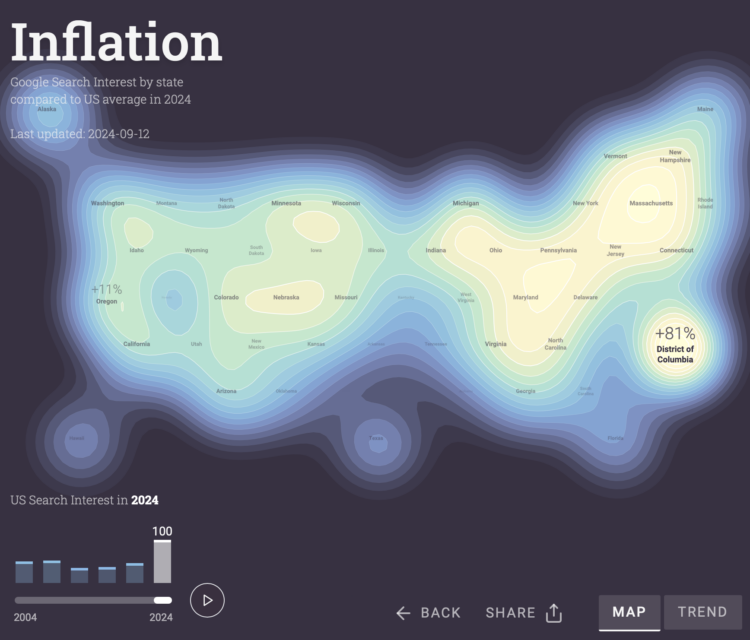

 Visualize This: The FlowingData Guide to Design, Visualization, and Statistics (2nd Edition)
Visualize This: The FlowingData Guide to Design, Visualization, and Statistics (2nd Edition)
